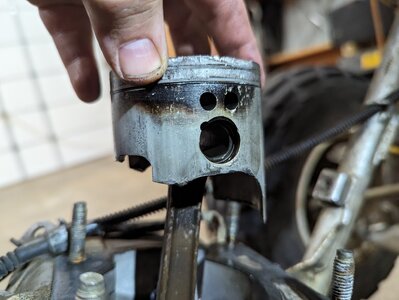I bought a 2000 blaster from a guy for $375 a couple weeks ago. The engine wouldn't turn over and I hoped it was a seized piston. After I got home I noticed the oil pump line to the carb was not connected and there was no cap on the nipple on the carb. Long story short the piston had pitting on the face and the skirting on the intake side broke off and into the crankcase. So I am replacing bearings, seals, crank (the crank connecting rod bearing was shot), and the clutch. I'm running stock exhaust. The crank should be here tomorrow and I want to order the correct jets so I can get this this running by the weekend. Any help you guys can offer would be awesome. P.S. I am at 841ft elevation
67.25 mm bore - wiseco piston - stock bottom end - stock exhaust
- Thread starter blaster_4_ever
- Start date

